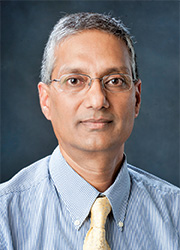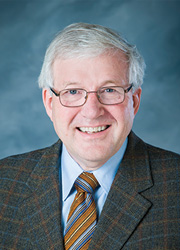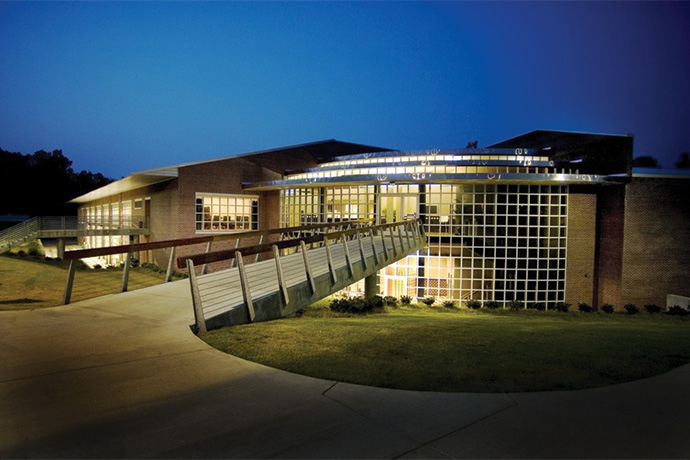The plan to move Mississippi into the forefront of automotive and aerospace manufacturing started several years ago, at the top, in the governor’s office. The strategy succeeded because players throughout the state did their part to ensure that sophisticated manufacturers setting up Mississippi operations would stay and grow, and serve as catalysts for similar companies to also discover the Magnolia State.
Entire centers designed to augment the new push for advanced manufacturing had to be conceived, implemented and built on university campuses. Community colleges did their part by adjusting their customized industry-specific training to fit the needs of new industries.
Along the way, the federal government took note by awarding Mississippi with bold new responsibilities that will have an impact not only in Mississippi, but beyond its borders.
Long-held stereotypes of Mississippi as behind the times are disappearing, says David Shaw, vice president of research and economic development, Mississippi State University. Early on, he says, when outsiders would hear about the changes occurring in the state, their response often was, “You’re kidding, Mississippi?”
Not anymore. Now, the word is out: “It’s pretty incredible the amount of momentum that folks have noticed,” Shaw says.
The Haley Barbour Center for Manufacturing Excellence at the University of Mississippi came about when Toyota announced it would build a manufacturing plant in Blue Springs. CME Director James G. Vaughn explains, Haley Barbour, governor at the time, asked Toyota and industry leaders throughout the state: “What do we lack, what do students not have that they should have?”
“The answer came that even though we were putting out good, professional students in business and engineering, they did not understand the world of manufacturing when they came out of the university program,” Vaughan says. So Ole Miss created a program that puts accounting, business and engineering majors, into a manufacturing curriculum so that they graduate with a bachelor’s degree in their chosen field and a minor in manufacturing. As far as Vaughan knows, it’s the only program of its kind in the country.
Many of the courses take place not in the classroom, but on the floor of an operating factory. “A real plant, real process, real product coming through the line,” he says.
Sonny Simmons, CEO of the Panola (County) Partnership, says the CME was one of the contributing factors to GE Aviation’s decision to locate in Batesville.
While Toyota was the engine that ignited CME in Oxford, in Starkville it was Nissan’s pending arrival in the state, which provided the impetus for Mississippi State University’s Center for Advanced Vehicular Systems, says Director Roger King.
“The idea was that since we didn’t have anything like it in the state, let’s create something. There’s the role the community colleges play, which is supporting the trades and the crafts, but there also is a role for the four-year degree programs, because the industry needs more than mechanics, welders, technicians,” Kings says. “They’re going to need some engineers also. And, since we’ve not had a history of automotive research in the state of Mississippi, we had to create that environment.”
While CAVS is the research part of the equation, CAVS Extension deals with practical manufacturing issues. Located in Canton, right across from the Nissan plant, CAVS Extension works with Nissan and other manufacturers in the state, helping with day-to-day problems.

“Mississippi State is leading a team of 18 universities to establish a center of excellence in unmanned aircraft.“
— Ratan Jha, director, Raspet
Besides assisting with initiatives such as lean manufacturing and Six Sigma, CAVS Extension Director Clay Walden runs a federal program called the Make it in America Challenge. Mississippi is one of 10 states to win the competitively funded proposal.
What’s it all about? Reshoring — that is, bringing manufacturing jobs back to Mississippi and to America from overseas. Walden and his team work with manufacturers around the state to help identify problems within their supply chains that they are bringing in from overseas. “It could be quality issues, it could be delivery issues,” Walden says.
Once manufacturers have identified a problem, CAVS Extension Tiger Teams work to find solutions first in local communities, then in the state of Mississippi and finally in America. In one example of how this works, an original equipment manufacturer in the furniture industry ended up reshoring furniture legs by switching to an injection-molded leg created by a plant in Mississippi.
“It’s really a better leg,” Walden says. “It looks like wood. It’s more durable and it’s from one of our small manufacturers. It’s a great example of how sometimes you need new technology, sometimes you need a new process.”
Another federal program that’s on track for funding will reside at Mississippi State’s Raspet Flight Research Laboratory. Raspet finds out early in 2015 if it is to become the lead center of the National Science Foundation Industry/University Cooperative Research Center for Advanced Composites in Transportation Vehicles. Mississippi State has completed the first two steps toward landing this grant.
“Statistically, by the time you come to this stage, you have a 90 percent chance of getting funded,” says Ratan Jha, Raspet director.
Of Mississippi manufacturers working in composites, three — GE Aviation, Aurora Flight Sciences and Airbus Helicopters — incubated their Mississippi operations at Raspet.
Another area of research under Jha’s direction involves unmanned aircraft. “The Federal Aviation Administration has a plan to establish one center of excellence in unmanned aircraft systems. Mississippi State is leading a team of 18 universities to establish that center of excellence,” Jha says.
Mississippi State has been a research college for a long time, says Kathy Geltson, associate vice president in David Shaw’s office. “We do about $200 billion-plus worth of research annually.” The university ranks in the “very high research activity” category on the Carnegie Classification of Institutions of Higher Education.

Dr. Roger King, Director of CAVS at MSU
At the local level, Simmons notes how the state’s coordinated effort has boosted the economy in his county. “We’re a town of less than 8,000. The county is less than 35,000, so we’re very small, but we’ve seen a little over $220 million of new investment in the last five years. We’ve created a little over 1,200 new jobs. We have a new payroll in circulation that exceeds $55 million from new companies and the expansions. We’re very proud of that.”
Another trickle-down effect occurred at Northwest Mississippi Community College. Dwayne Casey and Doug Freeze, director and assistant director of Workforce Development, note that manufacturers first began hiring fourth-semester students for apprenticeships, without waiting until they graduated. Then they started recruiting third-semester students.
But demand was so great, they began taking second-semester students. And, this past August, companies said they were willing to take students just entering the Advanced Manufacturing Partnership Program. These students go to class Monday, Wednesday and Friday. On Tuesdays and Thursdays they work at a plant for a minimum of 16 hours each week, while earning $14 an hour.
With all the state’s efforts to increase manufacturing, it now appears that Mississippi will be a top-ranked center for advanced manufacturing and R&D for a long time to come.
